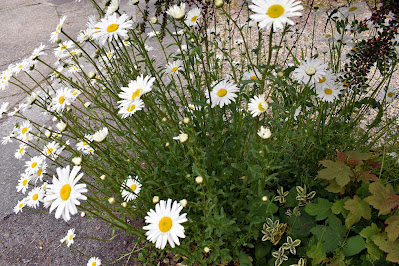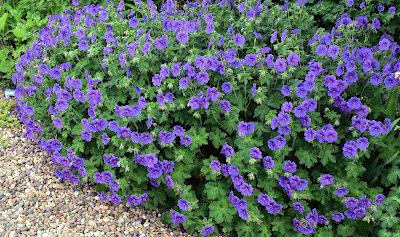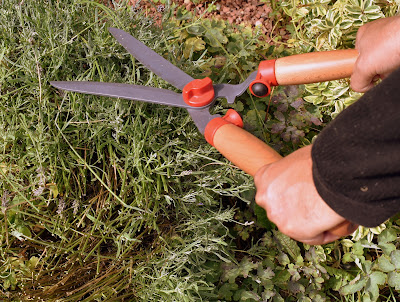Good quality tools are necessary when working in the garden. I prefer to use manual tools whenever possible in our garden. I find it more peaceful to use manual tools, better for wildlife and much quieter for ourselves and our neighbours. I also feel more connected somehow to our garden plants.
Sometimes power tools are necessary for the garden, but using manual tools rather than electric ones is an even greater consideration now for us that electricity prices are so high.
We find these Wolf Garten Shears easy to use with no energy costs at all, apart from your own physical power.
We do like tools that are easy to use and do not require too much effort. I would also rather buy quality tools that suit our needs and aim to buy tools that are longer lasting.
Wolf Garten Shears
Wolf is one of the brands I trust for gardening tools and are one of the brand of tools I use on a regular basis to keep our garden looking at its best. We also have secateurs of the Wolf brand and you can read my Review Of Wolf Garden By Pass Secateurs here. They have also proved a really great purchase.
The shears are used in our garden for cutting back shrubs, perennials and herbs such as lavender and geraniums where we need to cut a larger area of foliage. We use them to cut back annual flowers and any straggly growth as well.
Important aspects of garden shears are that they are sharp and cut cleanly. That it is easy to use with an ergonomic grip, a buffer to reduce jarring and pressure on our hands and wrists and it has a smooth action. In my experience, the Wolf Garten shears excel in all these areas.
I do think for the price and the quality that Wolf Garten Shears are excellent shears.
Cutting Back And Pruning Plants With Shears
Perennials require cutting back in late autumn after flowering has finished and when they are dying back. Equally, we can leave them until the following Spring. A Spring cutting back means that we leave the hollow stems and cover for our wildlife.
Lavender is best cut back after flowering but it is important to not cut back into old wood as it may not regrow. We need to cut so you can still see green shoots. This cutting back ensures a more compact shrub that will have the best chance of flowering well the following year and we can also use the cut flower stems as decoration in the home.
Hebes can be cut back lightly or some can be shaped into topiary-like balls as you prefer.
Our Laurel hedge gets cut back a few times a year to keep it looking neat and manageable.
Geraniums need cutting back after flowering. If we do this it tidies it up and also there is an opportunity that it may flower again. It will look bare for a week or two but the new regrowth is fresh green and lovely.
For any perennial you are cutting back it is important to cut close to the crown of the plant but above any new growth. We need a tool that will cut cleanly and not tear the plant.
I love the way that these shears cleanly and easily slice through our thick lavender borders and cut our small conifers cleanly. In my experience, they do not pull or injure the plants. We do not want to be tearing or pulling on plants that need cutting back and these shears just make this job so much easier and quicker to complete.
For a long time, I used my Grandads shears for these cutting jobs. While I love them because they were my Grandad's and are a link to a wonderful man I never knew as he died shortly after I was born, they are not easy shears to use for a long time.
I will always love and treasure my Grandad's shears, when I hold them I feel a part of history and closeness to my Grandad. In addition, all these decades on they are still in great working order. However, I do believe these Wolf Garten shears offer an added level of comfort and features that I do appreciate these days!
Good Qualities Of Wolf Garten Shears
- When I use my Wolf Garten Shears I find they are so much easier on my hands and arms and are of good solid quality. I find they are the nearest shears to the robust, quality and feel of my Grandad's shears but with the added level of modern comfort!
- Nonstick coated blades mean they rust a lot less and are much better when using them to cut plants with sticky sap. I clean them with a damp cloth and sometimes WD40 and a cloth.
- In my experience, they cut stems cleanly and sharply which is much better for the plants.
- Comfortable handles make the task of cutting back so much easier. They are simple to use and not hard on the hands or arms.
- They have a solid quality comfortable feel to the product which is important to me.
- Good bright points of orange-red colour mean they are not easily lost in the garden. This is essential for me as I am always putting down tools in the garden, getting distracted and forgetting where I left them!
There is a range of Wolf Garten shears, some normal sized for general cutting jobs, others about half the size developed for topiary hedging and smaller work, it all depends on your garden and what you need your shears for.











